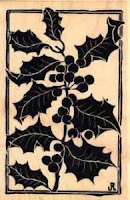In terms of invasive exotics, the Hawaiian Islands are a good case study.
DYK? Of plants growing in Hawaii, 75% are
introduced plant species, while only 25% are native plants that grew there
before the entrance of man on the scene. Many of these introductions seem beneficial,
like pineapple or oleander. Others like Chinese banyan, climbing fern or privet
are bad actors that crowd out the natural flora.
Exotic plants, also called non-native or alien
species, are those transported outside their range by human activity, whether
intentional or not. According to Hawaii’s Department of Land and Natural Resources, humans are “homogenizing” the world’s diverse flora at an
unprecedented rate. To paraphrase their report, ‘prior to human arrival the
rate of establishment of new species was one every 35,000 years or so, while
now it is 20-30 new species per year or approximately a million-fold increase.
‘ Plants that significantly disrupt the ecosystem are designated ‘invasive’.
.jpg) |
| Orange Rocket Barberry |
Back on the mainland, the Plant ConservationAlliance’s Invasive Plant Working Group notes that twenty states, mainly in the
northeast and the District of Columbia, have indicated that Japanese Barberry, Berberis japonica, is an ecological
threat that spreads by seed with 90% germination rates, and forms dense stands in
the wild, displacing native plants and reducing wildlife forage and habitat.
 |
| Best Shrub Far West Show |
CAUTION: Don’t confuse sterile Orange Rocket Barberry PP18411 with its renegade cousins!
Orange Rocket Barberry PP18411 lacks flowers and has
never been observed to set seed. It is not invasive. This
well-behaved new hybrid plant introduction, a Berberis thunbergeri selection, originated in the Czech Republic
and earned the Award of Best Shrub in the 2010 New Varieties Showcase at the Oregon Association of Nurserymen’s Far West
Show. So it is the perfect barberry for garden situations, along with its yellow twin: Golden Rocket Barberry PP18626.
Garden Debut® is extremely careful in the plants included
in the lineup of new introductions. You can count on their Great New Plants with confidence.
top photo courtesy National Park Service Vital Sign Monitoring Established
Invasive Plant Species. science.nature.nps.gov
Invasive Plant Species. science.nature.nps.gov
























